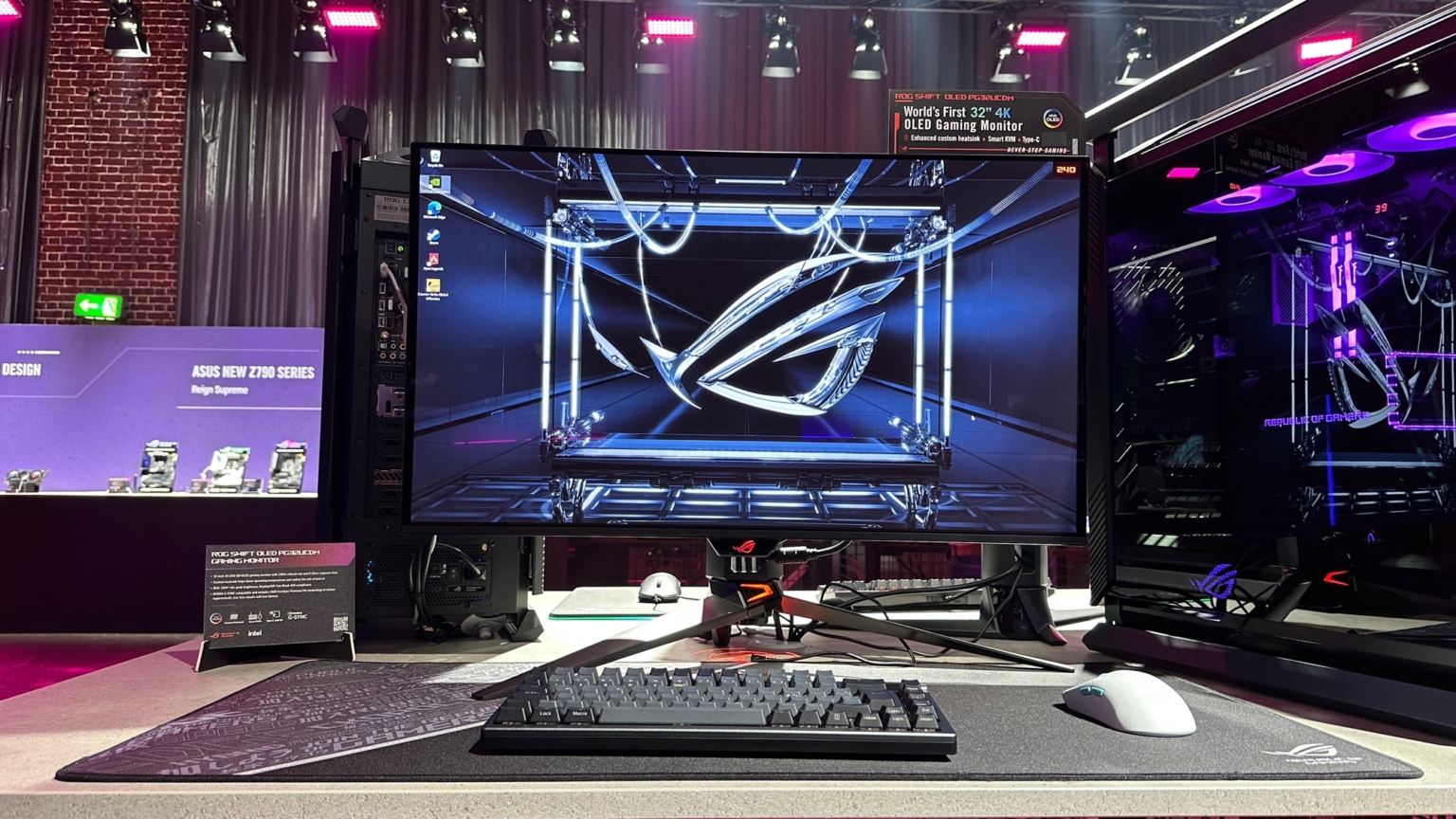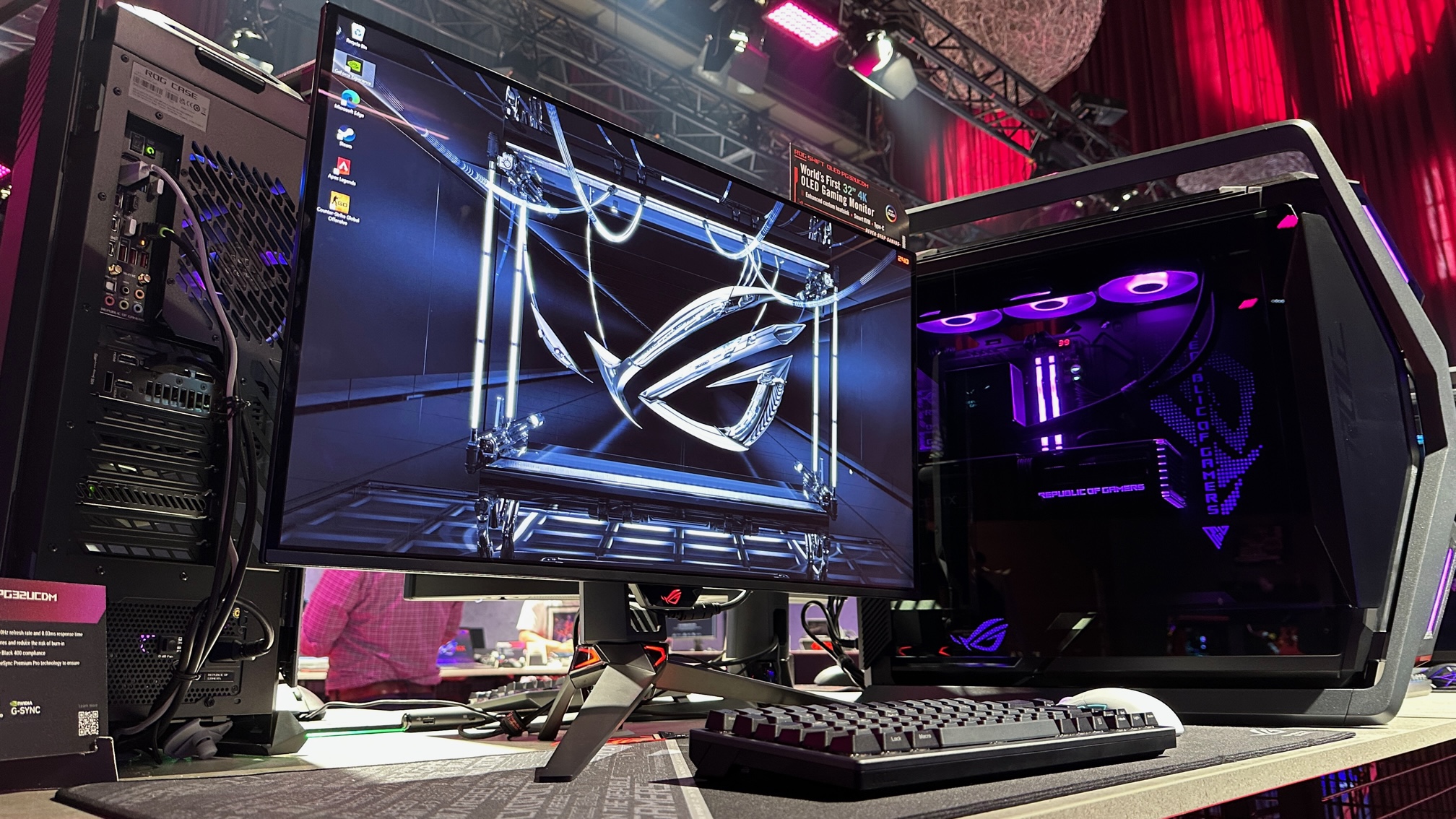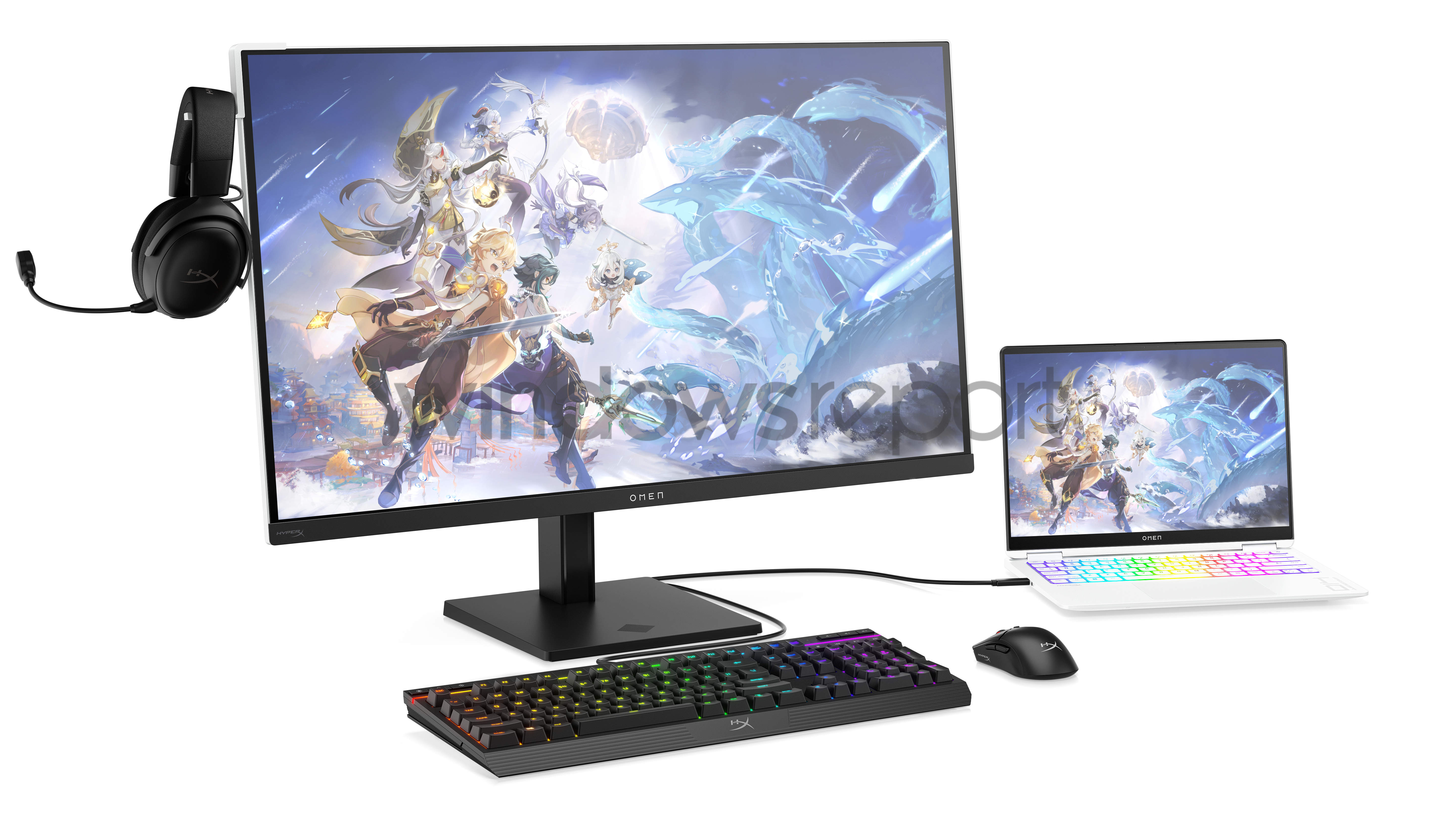A monitor that has it all!

From tftcentral:
The new screen is 31.5″ in size and has a 3840 x 2160 “4K” resolution. There is a high 240Hz refresh rate too, with adaptive-sync supporting variable refresh rates (VRR) from compatible NVIDIA and AMD systems. It includes certification under the AMD ‘FreeSync Premium’ scheme as well to give some reassurance around VRR performance. The screen has a quoted 0.03 ms G2G response time spec as well since it’s an OLED panel, with near-instant response times inherent to this technology.
HDR Capabilities
The peak brightness for HDR is rated at 1000 nits (3% APL), dropping to 400 nits for 10% APL and 250 nits for 100% APL. The OLED panel offers the usual benefits of per pixel dimming (so no blooming or halos), true blacks and near-infinite contrast ratio. The screen will also meet the VESA ‘DisplayHDR 400 True Black’ tier, not to be confused with the normal HDR400 tier for LCD monitors. In SDR mode the screen should also offer a 250 nits full screen (100% APL) brightness, with a uniform brightness mode offering stable brightness and no need for ABL dimming, like we’ve seen on previous Asus OLED displays.
Custom heatsink and Graphene rear panel
As with previous Asus OLED screens we’ve seen released like their 27″ 1440p 240Hz model, the Asus ROG Swift OLED PG27AQDM, the new display will feature a custom heatsink and “graphene rear panel” which means it can operate without an active cooling fan, and which the company says should also help with lifespan and reduce the risk of image retention.
QD-OLED “semi glossy” panel coating
Like other QD-OLED panels released to date, the screen features the normal Semi glossy coating type, with a cleaner and clearer image than matte coating used on some other OLED panels (including their 27″ OLED PG27AQDM which uses an LG.Display WOLED panel). This isn’t to everyone’s taste, but a lot of people do prefer the cleaner image, especially as the monitor sized WOLED panels actually had a more aggressive and grainy coating than normal matte coatings used in the monitor market. One thing to note though is that the lack of a polarizer on the panel means that in some lighting conditions you do get a reduced perceived contrast and black depth, more so than on WOLED panels. This is a drawback of current QD-OLED offerings, although these panels are always better if you can use them in darker rooms anyway.
Second Generation QD-OLED Panel Benefits
The ROG Swift PG32UCDM offers a 31.5″ screen size and will be built around Samsung’s forthcoming QD-OLED panel which we discussed in our recent roadmap video here. This will be part of their second generation QD-OLED technology too, including better brightness capabilities and a somewhat improved sub-pixel layout that helps improve text clarity a bit. We experienced this new layout in the recently reviewed Samsung Odyssey OLED G95SC display (49″ super ultrawide) and found it improved compared with the first gen panels, like that used in the wide range of 34″ models on the market like the Dell Alienware AW3423DW for instance.
Pricing and Availability
Update: the official press release talks about an estimated launch date in Q1, which ties in with what we were told by a product manager who thought it would likely be early to middle part of Q1 at that. Based on the latest panel production roadmap information we would have expected it being launched a bit later though, possibly around towards the end of Q2 2024, so time will tell. This will depend on production of course as the sample showcased at the event is only a prototype.
YouTube
Price mentioned at around $1500.
Media coverage
tftcentral: https://tftcentral.co.uk/news/asus-...-31-5-qd-oled-panel-4k-and-240hz-refresh-rate
Trusted Reviews: https://www.trustedreviews.com/reviews/asus-rog-swift-oled-pg32ucdm
Notebookcheck: https://www.notebookcheck.net/ASUS...-combine-4K-and-240-Hz-visuals.742965.0.html
will update post with more news as they become available.

From tftcentral:
The new screen is 31.5″ in size and has a 3840 x 2160 “4K” resolution. There is a high 240Hz refresh rate too, with adaptive-sync supporting variable refresh rates (VRR) from compatible NVIDIA and AMD systems. It includes certification under the AMD ‘FreeSync Premium’ scheme as well to give some reassurance around VRR performance. The screen has a quoted 0.03 ms G2G response time spec as well since it’s an OLED panel, with near-instant response times inherent to this technology.
HDR Capabilities
The peak brightness for HDR is rated at 1000 nits (3% APL), dropping to 400 nits for 10% APL and 250 nits for 100% APL. The OLED panel offers the usual benefits of per pixel dimming (so no blooming or halos), true blacks and near-infinite contrast ratio. The screen will also meet the VESA ‘DisplayHDR 400 True Black’ tier, not to be confused with the normal HDR400 tier for LCD monitors. In SDR mode the screen should also offer a 250 nits full screen (100% APL) brightness, with a uniform brightness mode offering stable brightness and no need for ABL dimming, like we’ve seen on previous Asus OLED displays.
Custom heatsink and Graphene rear panel
As with previous Asus OLED screens we’ve seen released like their 27″ 1440p 240Hz model, the Asus ROG Swift OLED PG27AQDM, the new display will feature a custom heatsink and “graphene rear panel” which means it can operate without an active cooling fan, and which the company says should also help with lifespan and reduce the risk of image retention.
QD-OLED “semi glossy” panel coating
Like other QD-OLED panels released to date, the screen features the normal Semi glossy coating type, with a cleaner and clearer image than matte coating used on some other OLED panels (including their 27″ OLED PG27AQDM which uses an LG.Display WOLED panel). This isn’t to everyone’s taste, but a lot of people do prefer the cleaner image, especially as the monitor sized WOLED panels actually had a more aggressive and grainy coating than normal matte coatings used in the monitor market. One thing to note though is that the lack of a polarizer on the panel means that in some lighting conditions you do get a reduced perceived contrast and black depth, more so than on WOLED panels. This is a drawback of current QD-OLED offerings, although these panels are always better if you can use them in darker rooms anyway.
Second Generation QD-OLED Panel Benefits
The ROG Swift PG32UCDM offers a 31.5″ screen size and will be built around Samsung’s forthcoming QD-OLED panel which we discussed in our recent roadmap video here. This will be part of their second generation QD-OLED technology too, including better brightness capabilities and a somewhat improved sub-pixel layout that helps improve text clarity a bit. We experienced this new layout in the recently reviewed Samsung Odyssey OLED G95SC display (49″ super ultrawide) and found it improved compared with the first gen panels, like that used in the wide range of 34″ models on the market like the Dell Alienware AW3423DW for instance.
Pricing and Availability
Update: the official press release talks about an estimated launch date in Q1, which ties in with what we were told by a product manager who thought it would likely be early to middle part of Q1 at that. Based on the latest panel production roadmap information we would have expected it being launched a bit later though, possibly around towards the end of Q2 2024, so time will tell. This will depend on production of course as the sample showcased at the event is only a prototype.
YouTube
Price mentioned at around $1500.
Media coverage
tftcentral: https://tftcentral.co.uk/news/asus-...-31-5-qd-oled-panel-4k-and-240hz-refresh-rate
Trusted Reviews: https://www.trustedreviews.com/reviews/asus-rog-swift-oled-pg32ucdm
Notebookcheck: https://www.notebookcheck.net/ASUS...-combine-4K-and-240-Hz-visuals.742965.0.html
will update post with more news as they become available.
Last edited:







